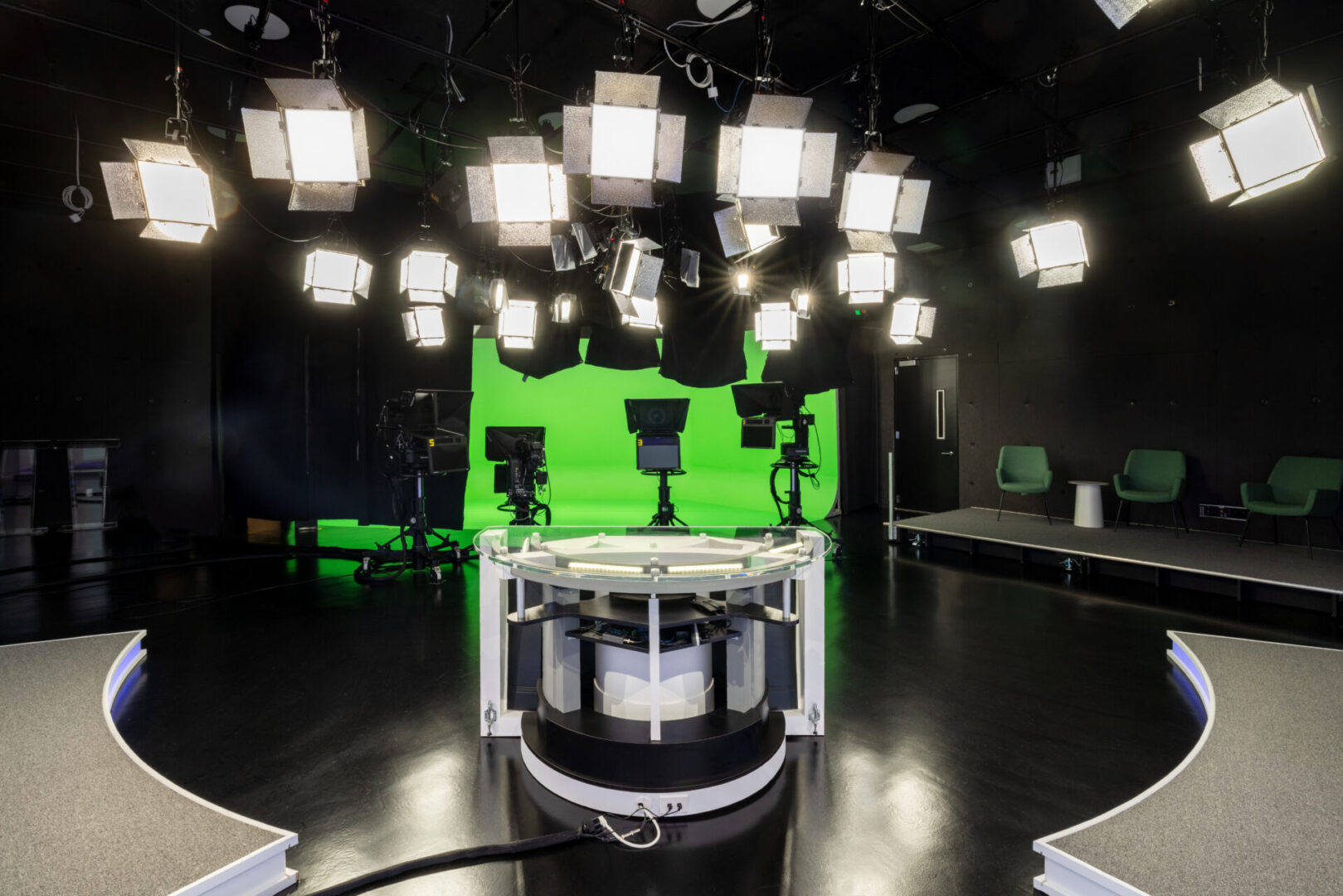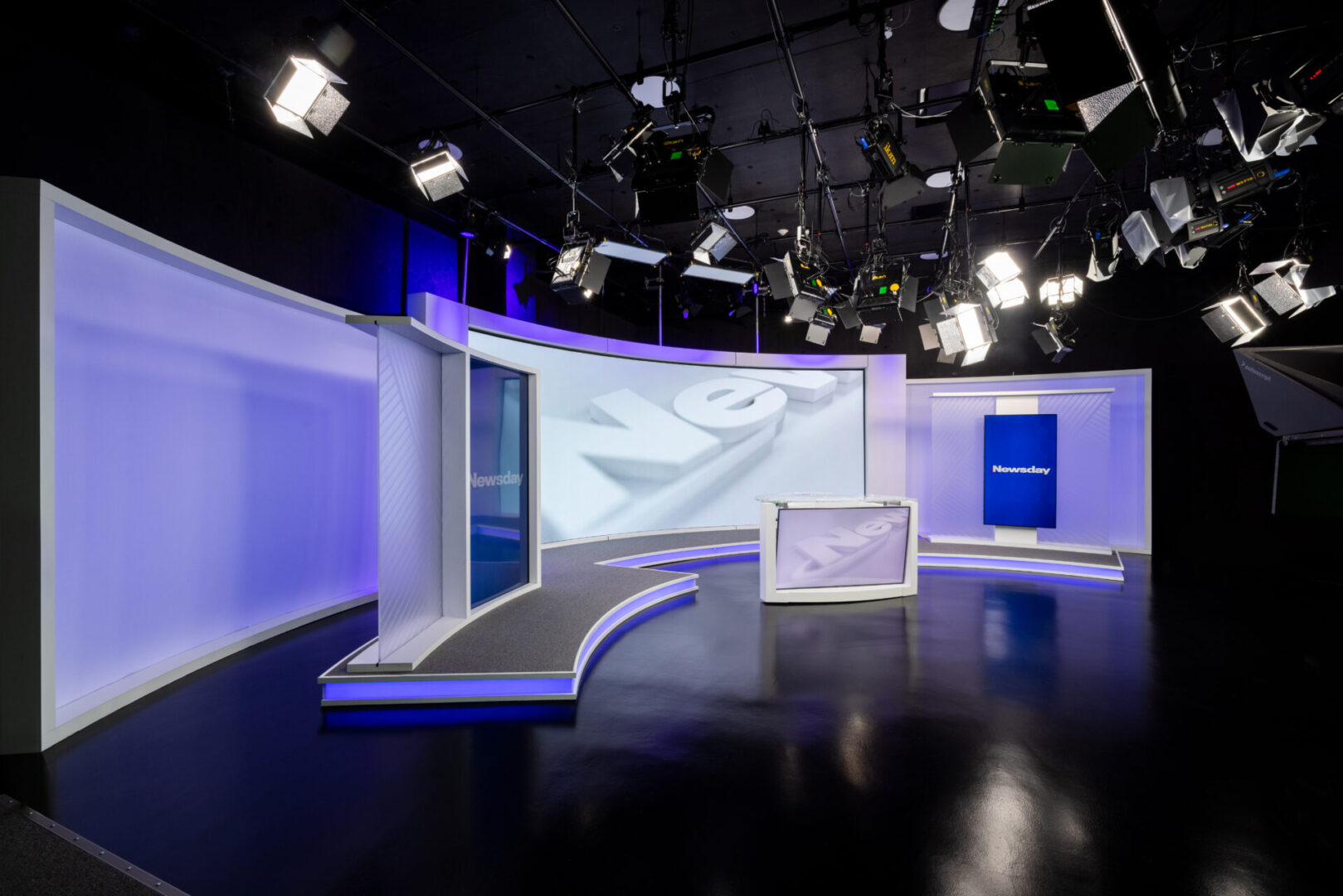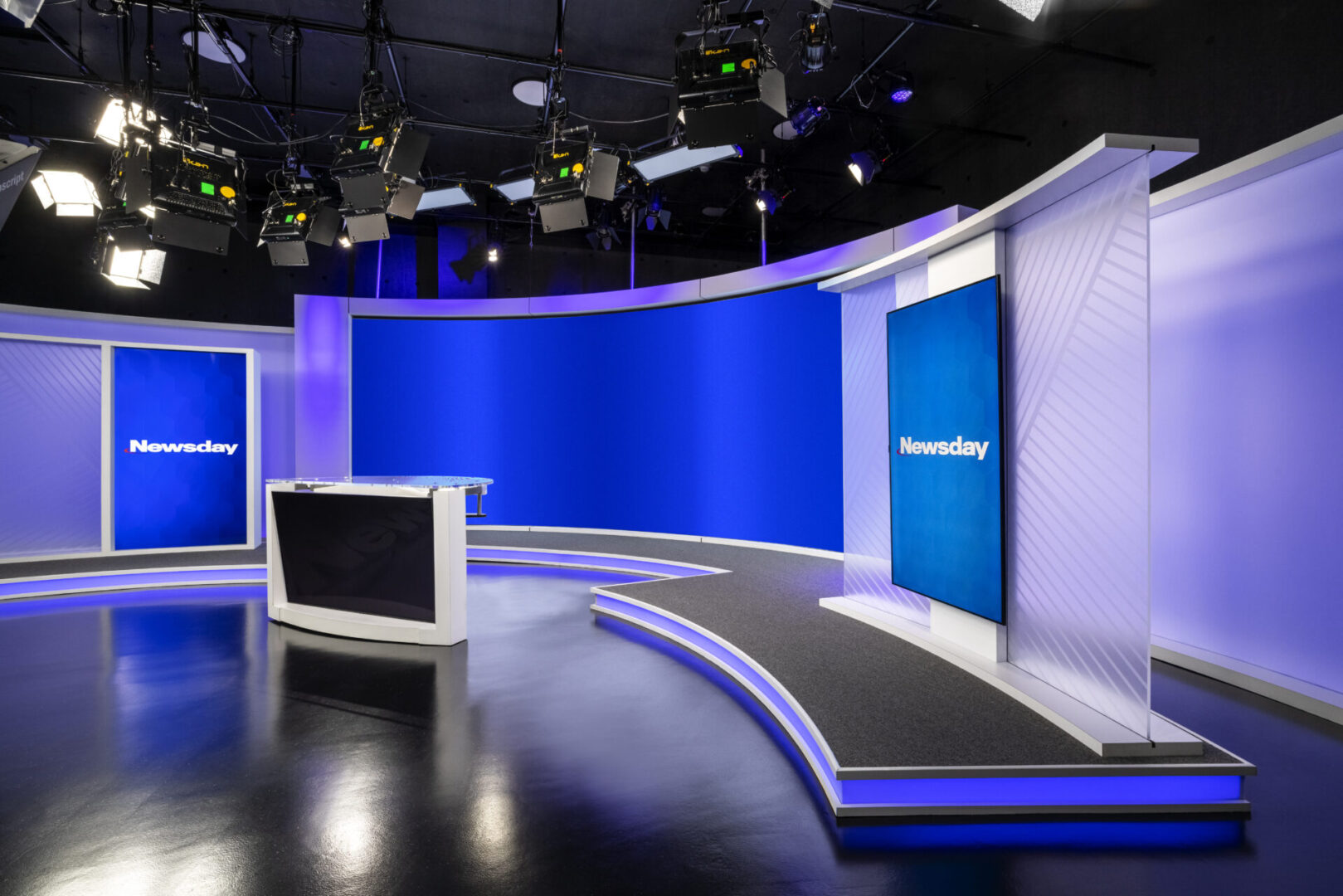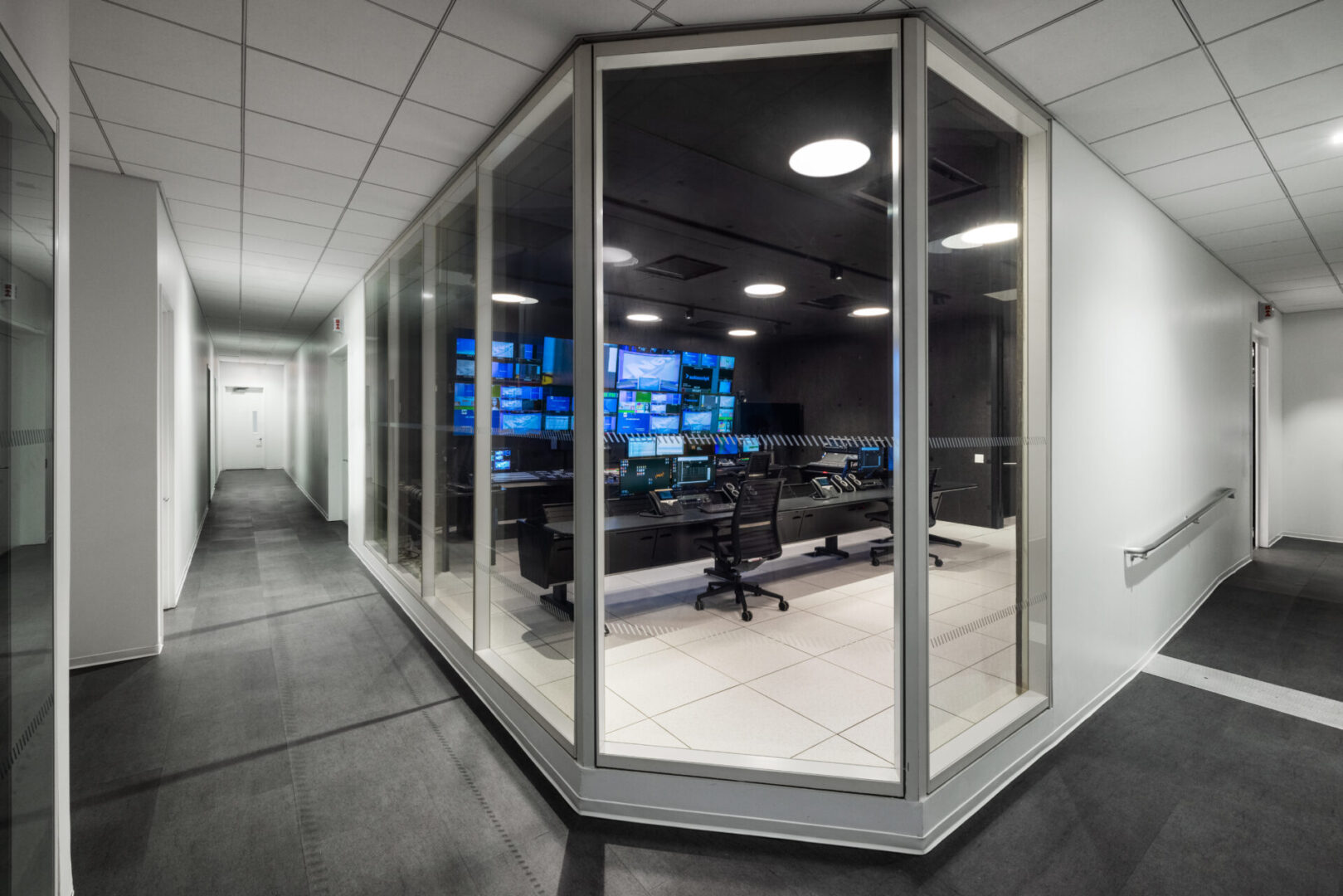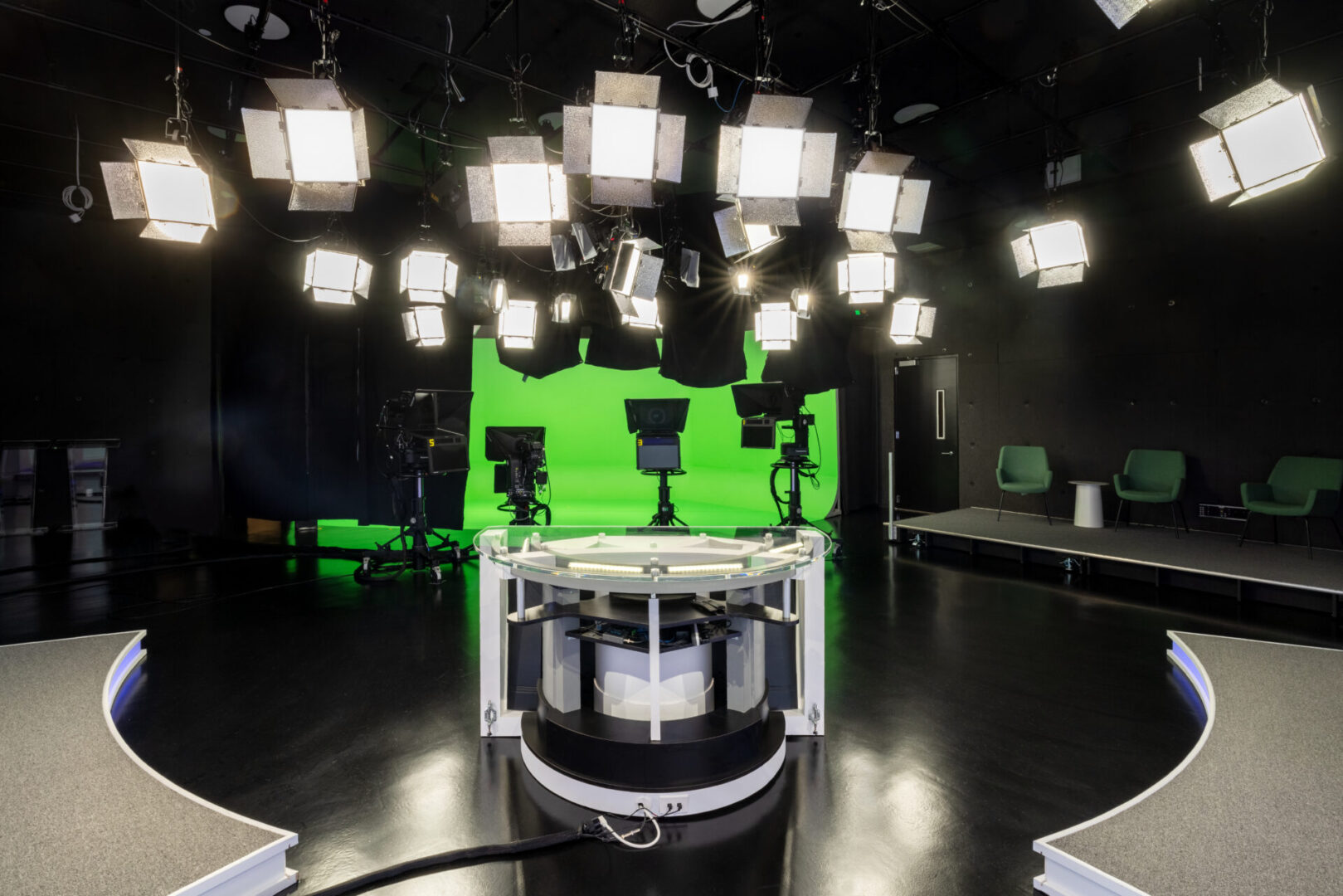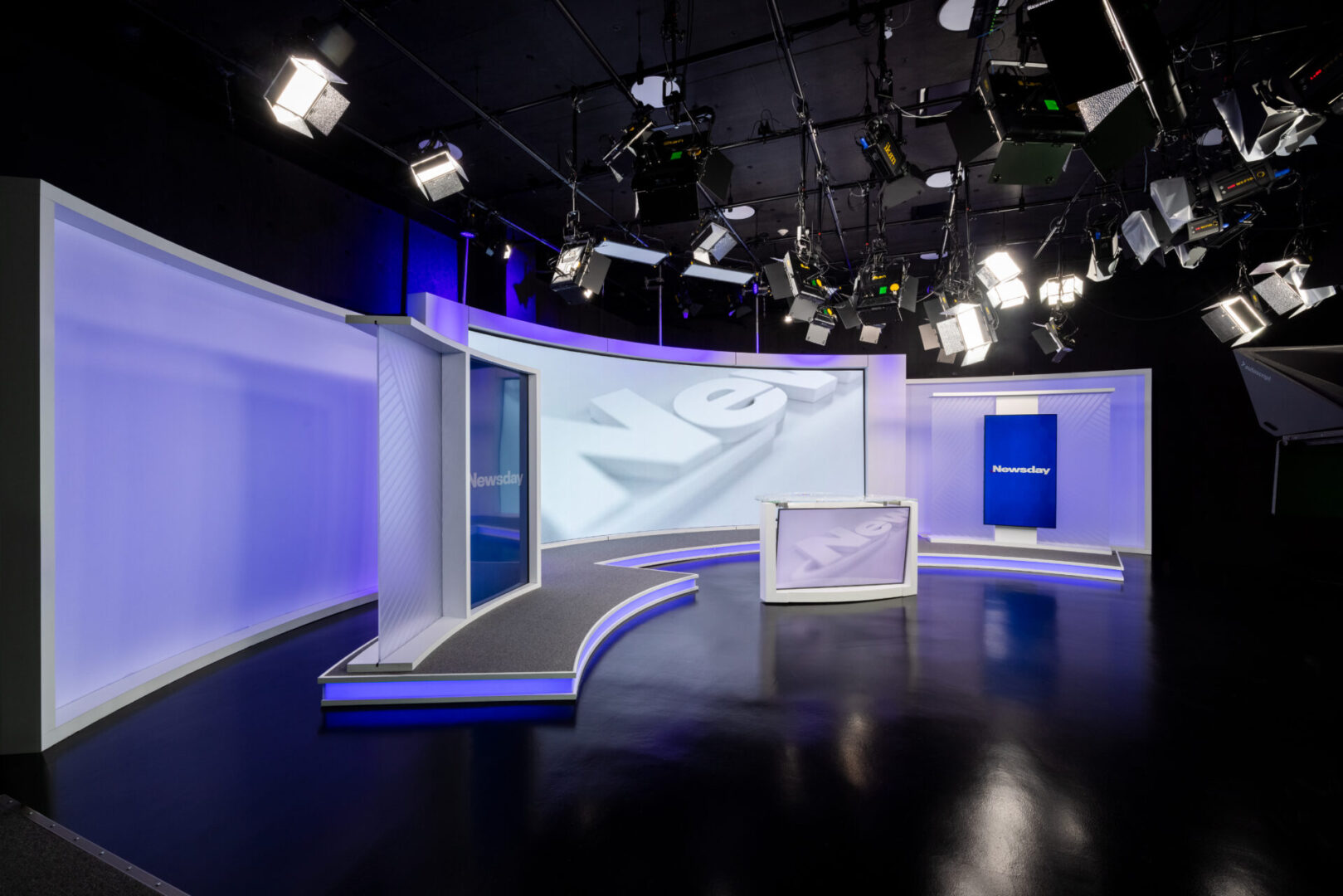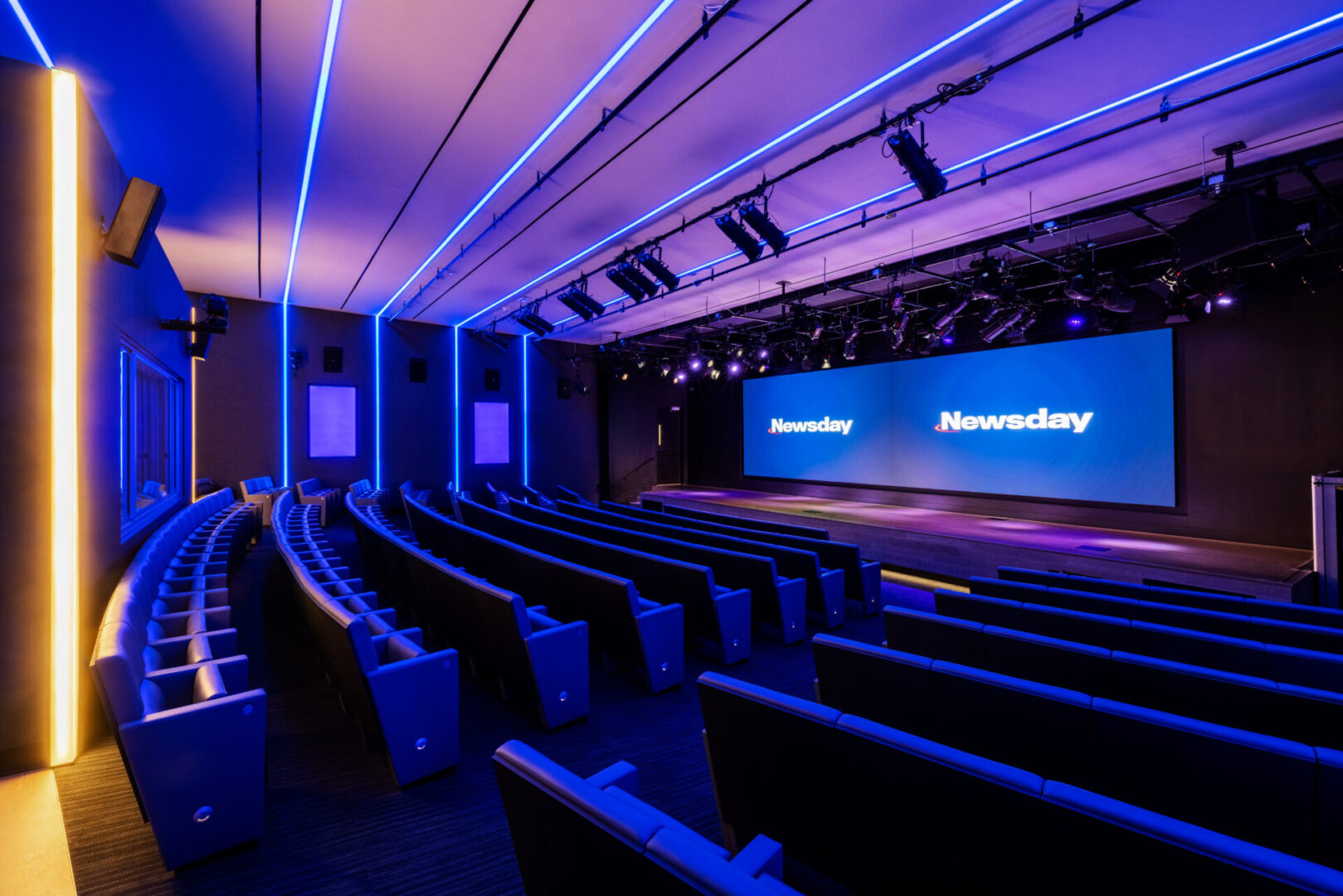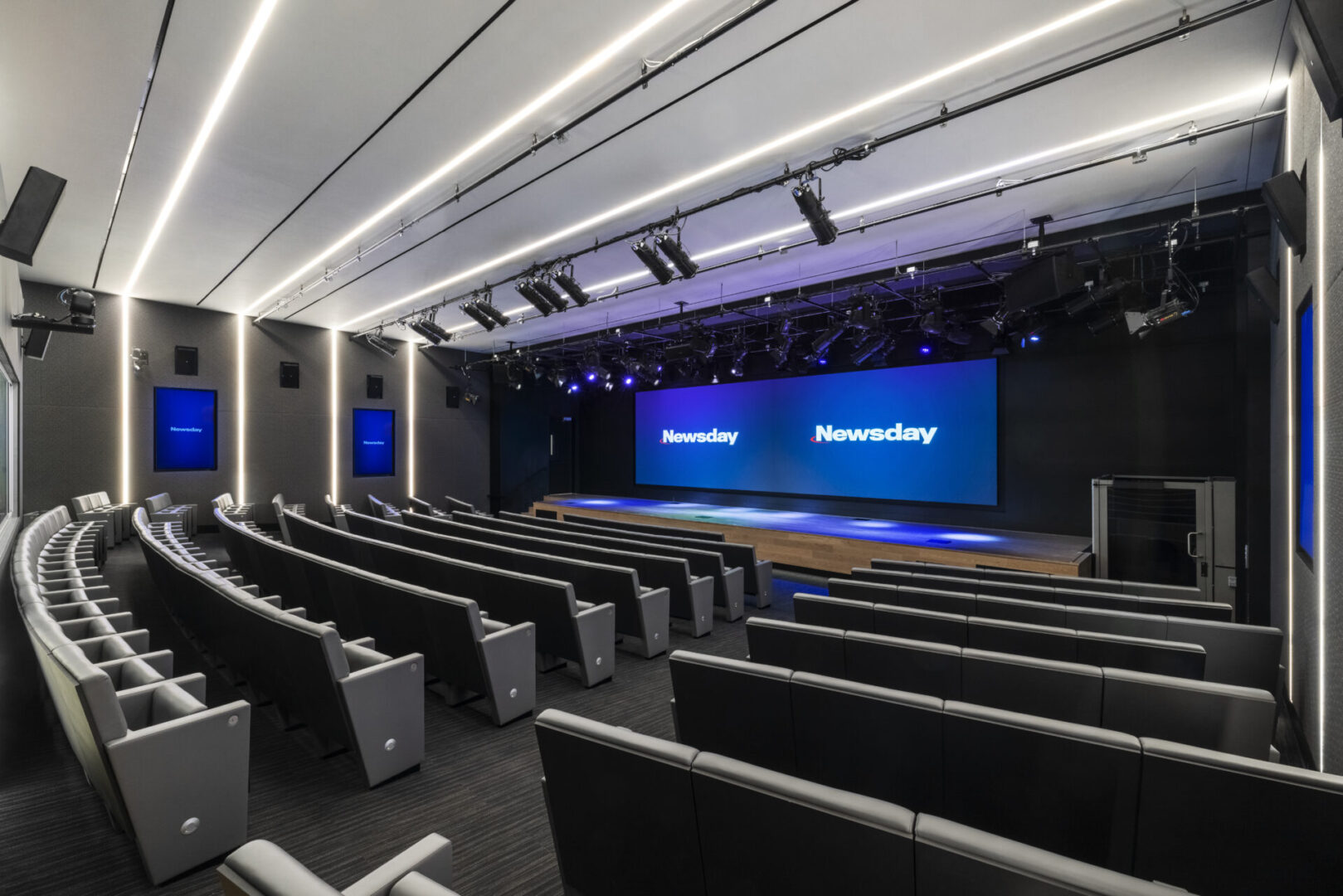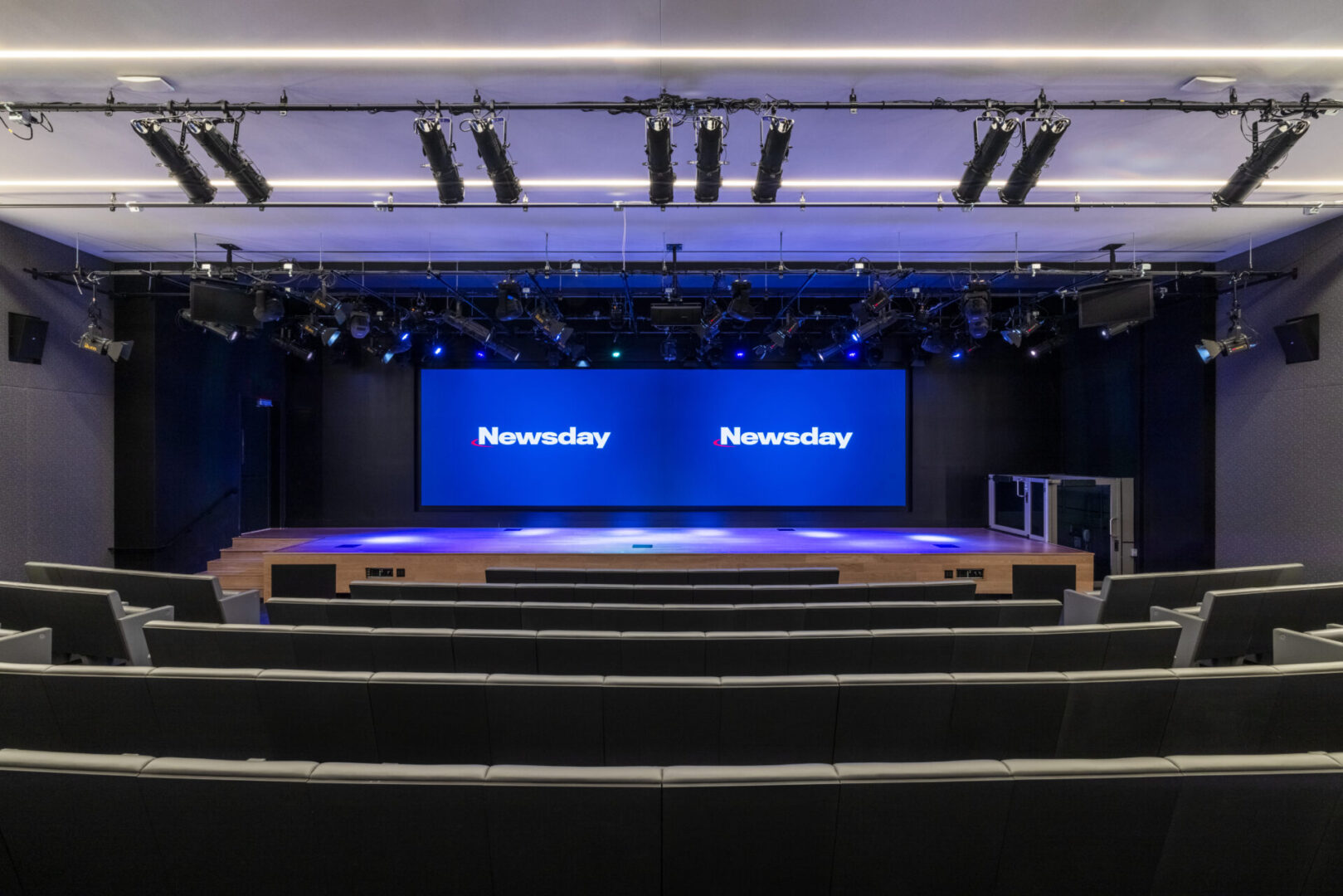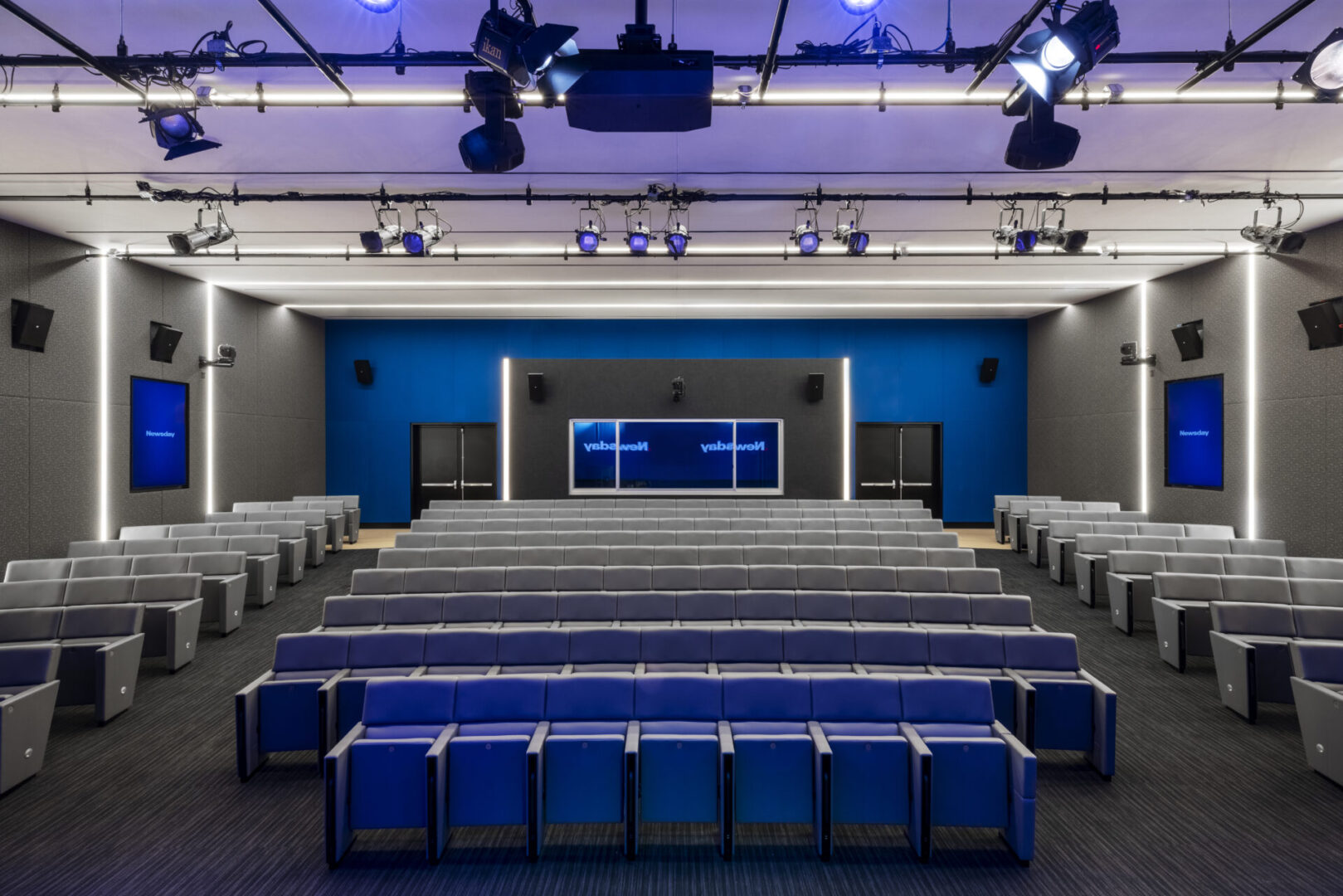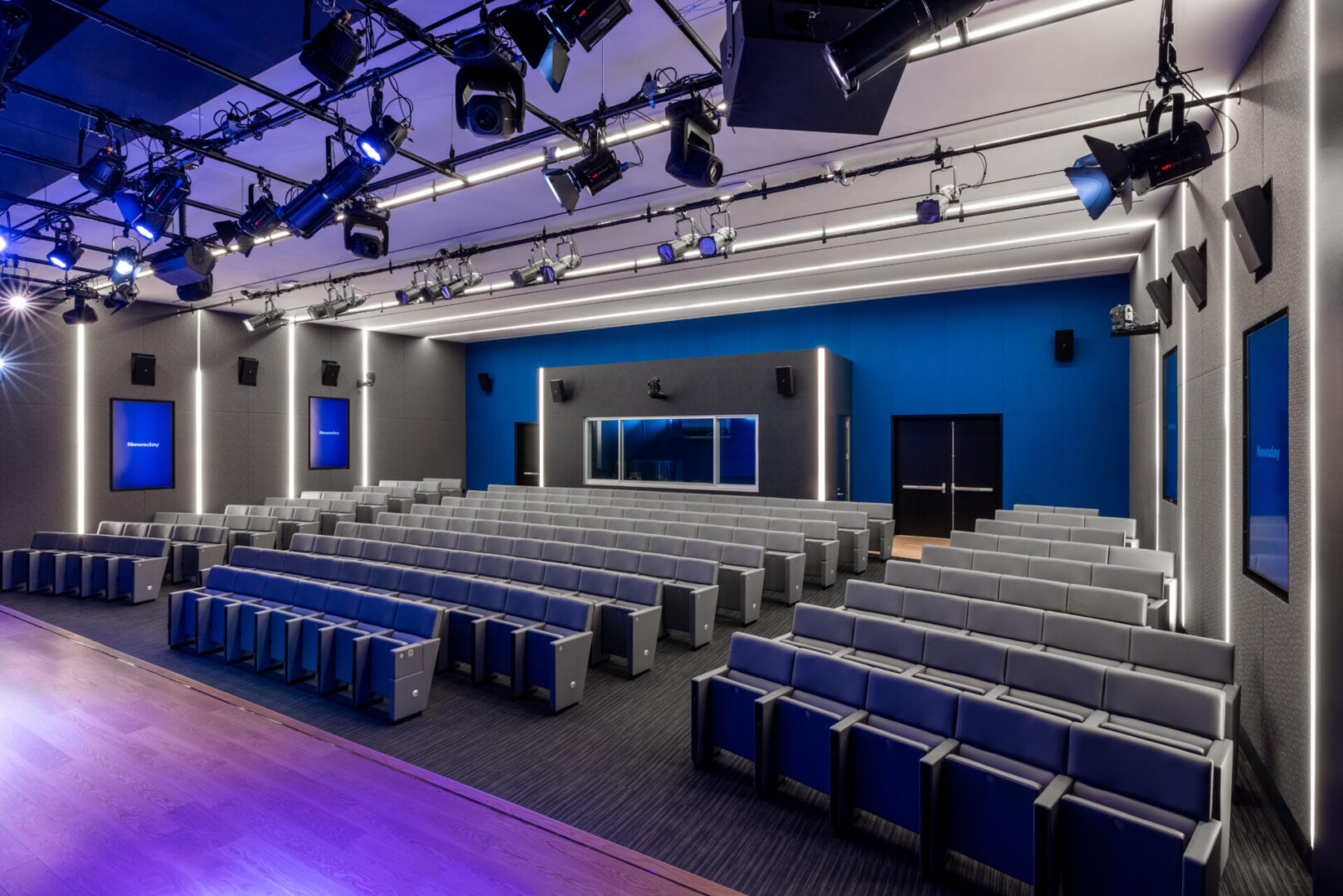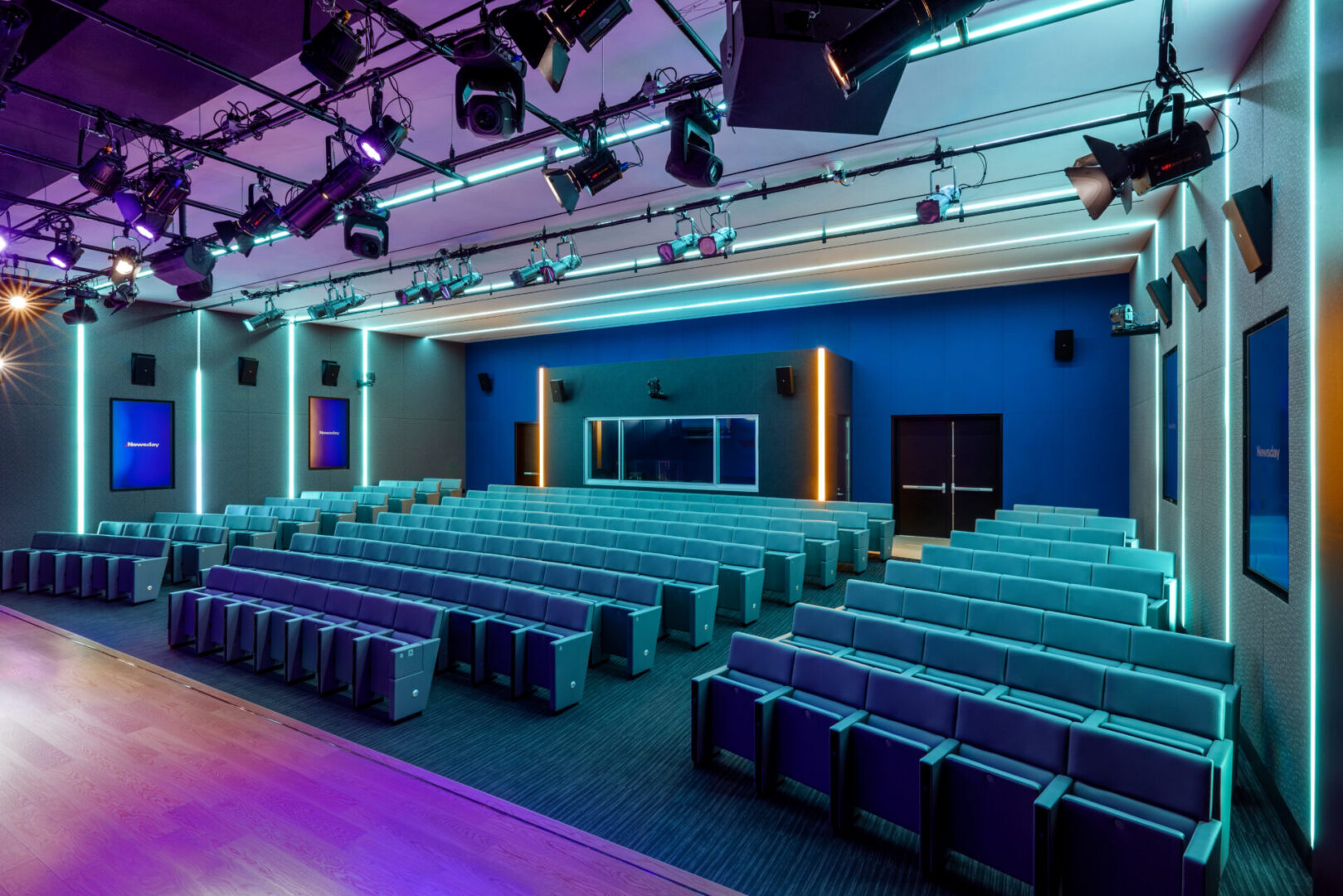KMH Integration Takes Newsday Into a Digital Multimedia Future
Challenge
- Design and build a technologically advanced media production center supporting every aspect of Newsday’s expanding media operations
- Build production support for content creating spanning print journalism, online programming, social media and broadcast and live TV production
- Incorporate flexibility for national and regional news programming
Solution
- KMH worked closely with several specialized technology providers, Newsday management and technical production teams.
KMH designed and built a technologically advanced media production center supporting every aspect of Newsday’s expanding media operations.
Results
Enhanced production support for content creation spanning print journalism, online programming, social media and broadcast and live TV production
New flexible workspaces to enhance Newsday’s regional programming
Production teams can build customized environments for specialized news segments.
KMH Integration led the design and A/V system installation for the recently completed Newsday digital multimedia production facility. The new technologically advanced center supports every aspect of Newsday’s expanding media operations from print journalism, online programming, and social media to its newest area: broadcast and live TV production.
The newly designed 2,169 sq.-ft. production space includes hybrid 4K-capable/Full HD studios and control rooms, a “virtual” news set with Augmented Reality (AR) capabilities, and a 200-seat interactive, multimedia space. The facility also includes multiple locations within the building for producing video segments, podcast recordings, and internal communications content.
KMH managed the overall project by working closely with several specialized technology providers including Analog Way, FX Design Group, Neoti and Vizrt, TPG Architecture, Lilker Associates for mechanical, electrical, and plumbing (MEP), Longman Lindsey acoustical consultants, and a range of audio and video product manufacturers.
KMH also collaborated and consulted with Newsday management and technical production teams from initial design through project completion.
“The main goal was to ensure the facility supported current production requirements and also had a flexible infrastructure to accommodate expansion and the addition of new technologies,” Henneman said.
The production facility first went online for Election Night 2020, delivering live reporting, in-depth analysis, and continuous coverage of national, state, and local races. The facility has since been producing and airing Newsday’s news, lifestyle, and sports programming.
Cassidy noted the virtual set’s “green screen” capabilities were a key component of Newsday’s Election Night success. “We were continuously live throughout the night, with a live news broadcast at the top and bottom of every hour,” he said.
“We had one anchor on the virtual set where we could drop in graphics and statistical updates. Then we used the hard set for news reports, commentary, and live remote footage.”
He added, the virtual set will also enable Newsday to expand and enhance its regional programming. New segments are planned to highlight the work of its field reporters, currently covering topics as diverse as high school sports and arts to entertainment and business to education.
“The virtual set gives us opportunities to do so much more immersive storytelling,” Cassidy said. “Now we can build customized environments where all our reporters can report from, basically on a green screen.”
KMH designed the facility’s new multimedia space as an interactive way of presenting and delivering content, such as the popular “Newsday Live” town hall events that are open to public audiences. The multimedia space can remotely connect to the main control room and studio, allowing producers to easily incorporate on-stage events as a live or pre-recorded element of a news show. KMH also built a second control room in the backstage area, so the theater can operate as an independent studio or as additional support for the main control room.
The space has a 7680 × 2160 LED 1.5 mm video wall, 5.1 surround sound audio, and robotic, remotely controlled POV cameras that can send footage from the video wall to either the main studio or to the displays installed in the lobby or around the facility.
Analog Way, a manufacturer of presentation systems and image processing solutions, was involved in the early design phases, especially the multimedia space project. They consulted on the specifications for its LED video wall and assisted in the design of the broadcast studio video wall.
The TV studio's final wall has a custom resolution of 4608×1728 using 1.5 mm LED technology. Analog Way’s Aquilon processor allows seamless switching between sources and scales all content to fit the wall, especially windowed content in any size or position on the fly. As a result, producers can easily pull up presets from the control system and seamlessly switch those to the screen.
The Aquilon processor delivers a user-friendly way of seamlessly feeding the wall with a variety of content, taking in and scaling any source type or resolution. The processor can up-, down- and cross-convert HDR/SDR content to optimize on-screen image quality automatically.
Collaborating with KMH and the Newsday team on the new sets was The FX Design Group, specialists in designing studio sets and lighting systems. The FX team custom-designed, fabricated, and built the main studio set, meeting Newsday’s specifications for a modern look and feel that would appeal to younger generations of news media consumers.
The FX team also designed the studio lighting for the main set, newsflash area, and multimedia space, and also completed the scenic portion of the project. Lighting equipment provided by the FX team used Ikan brand studio lighting equipment, in addition to ETC lighting control, with Coemar and Chauvet fixtures used in the multimedia space.
Neoti, a manufacturer of direct-view LED video displays, worked with KMH, FX, and Analog Way to develop a flexible and consistent way of building content for the main studio set’s curved video wall and maintaining presentation consistency. The custom curve was larger than a standard five-degree curve, which can lead to any image imperfections being noticeably visible. When designing the final version of the studio video wall, the Neoti team determined a 1.5 mm display would meet the project’s needs, based on such factors as the talent’s average distance from the wall and the type of content typically displayed, and then worked with FX to ensure the wall’s structure had enough clearance at the top for its panels.
Vizrt delivered a range of comprehensive graphics and production workflows to give Newsday more flexibility in assembling newscasts.
The Vizrt graphics implementation satisfies Newsday’s specific requirements for material delivery in 3 aspect ratios (16×9, square, and portrait) using a single workflow, adjusting video frames, and optimizing graphics layouts on the fly. Vizrt graphics engines provide virtual set scenes for the studio, creating photorealistic backgrounds and even AR graphics over hard sets when used with tracking cameras. Other graphics engines let journalists choose a graphic template, populate the data, then save it to the rundown.
Multiple edit stations using Adobe Premiere use the Vizrt NLE plug-in to insert and preview template graphics on a timeline. Vizrt also provided a graphics application with manual control capabilities, a file-based content management system, a newsroom interface with a MOS gateway to interact with Newsday’s ENPS newsroom control system, and production automation for scripted and unscripted shows.
“The Newsday team knew what they wanted and clearly had the needs of its customers in mind when we started work on this project,” said Henneman. “The end result is a full-service digital content and media production space built to last. This type of facility is the model template for a modern content and news organization.”

